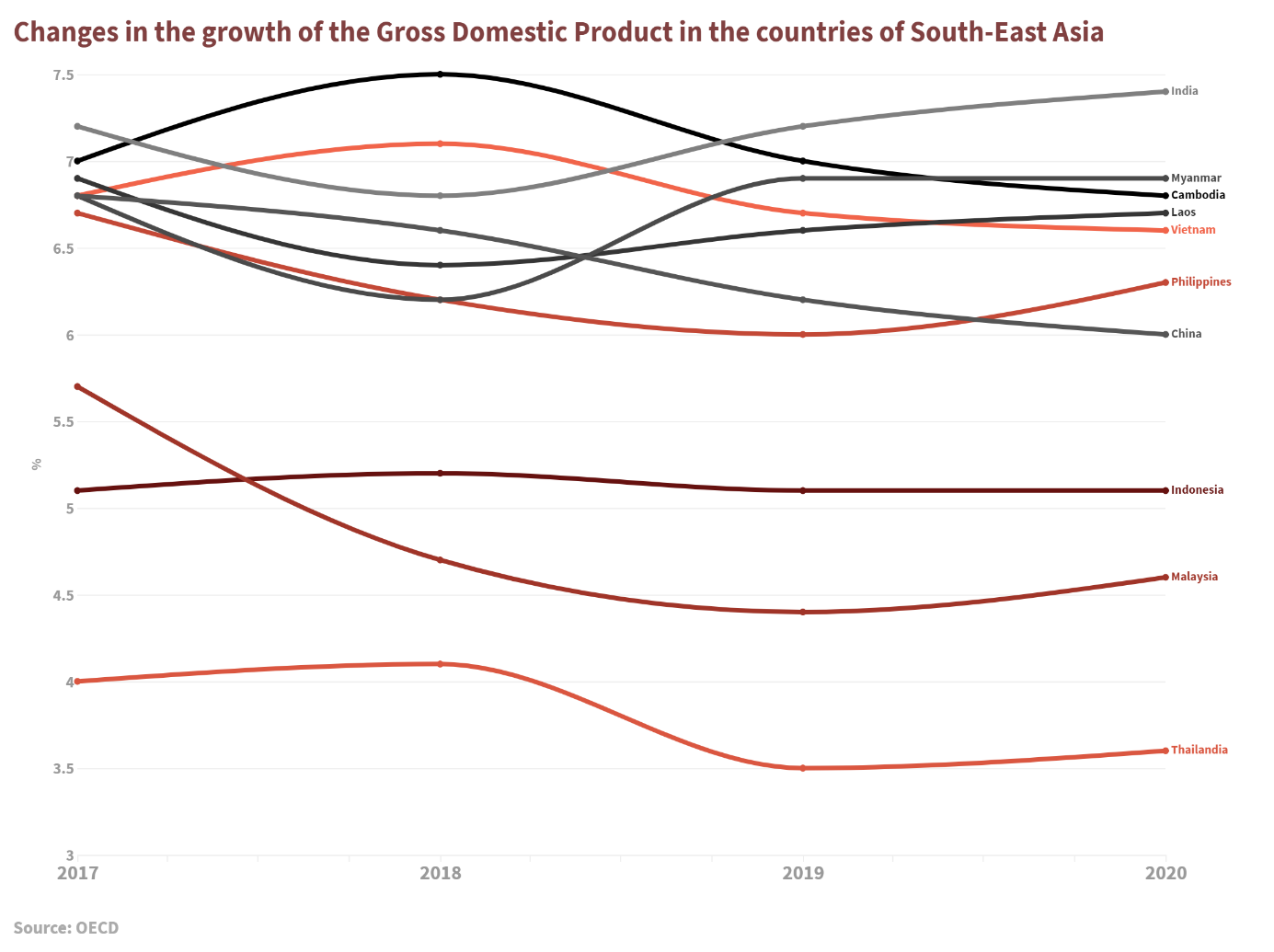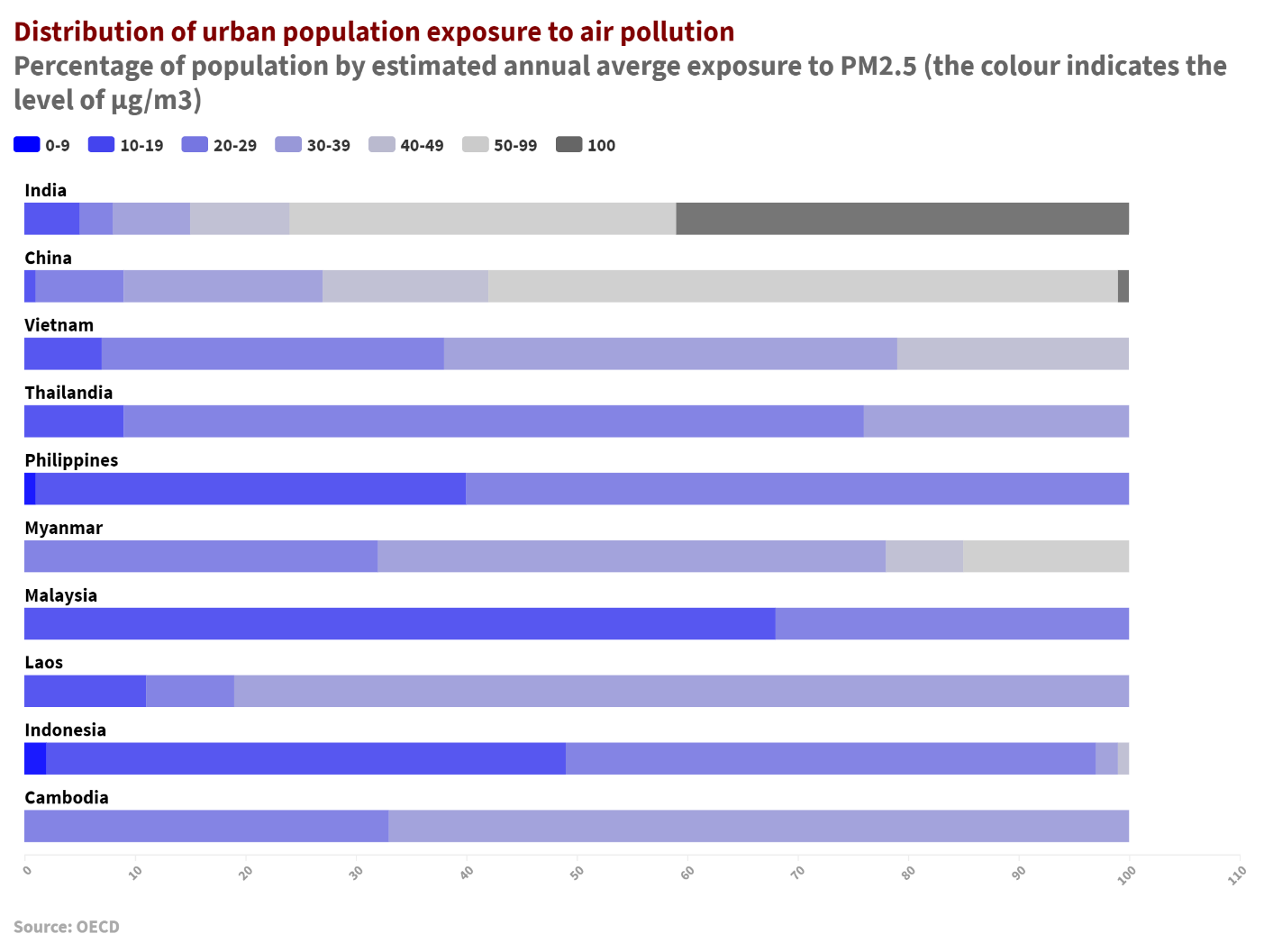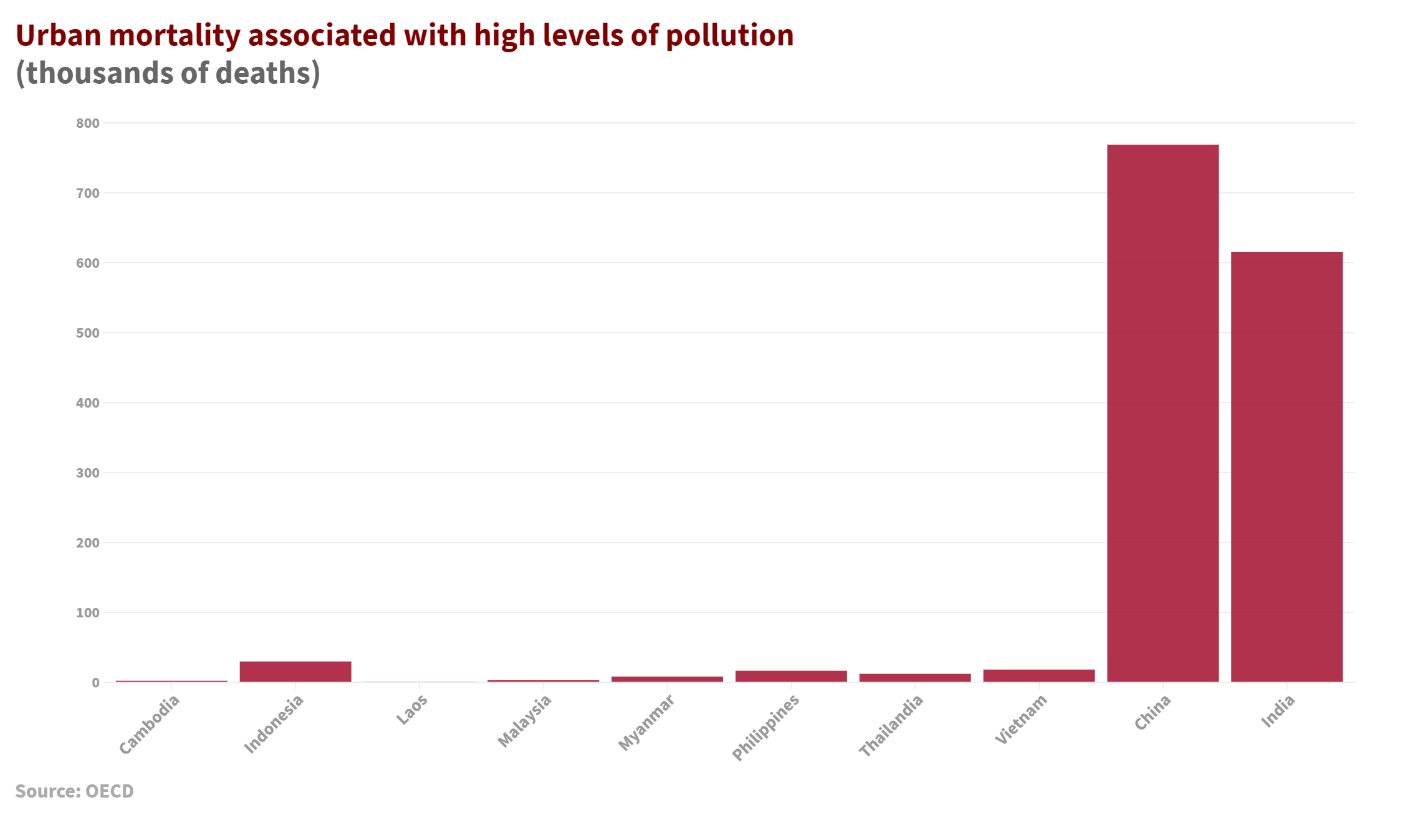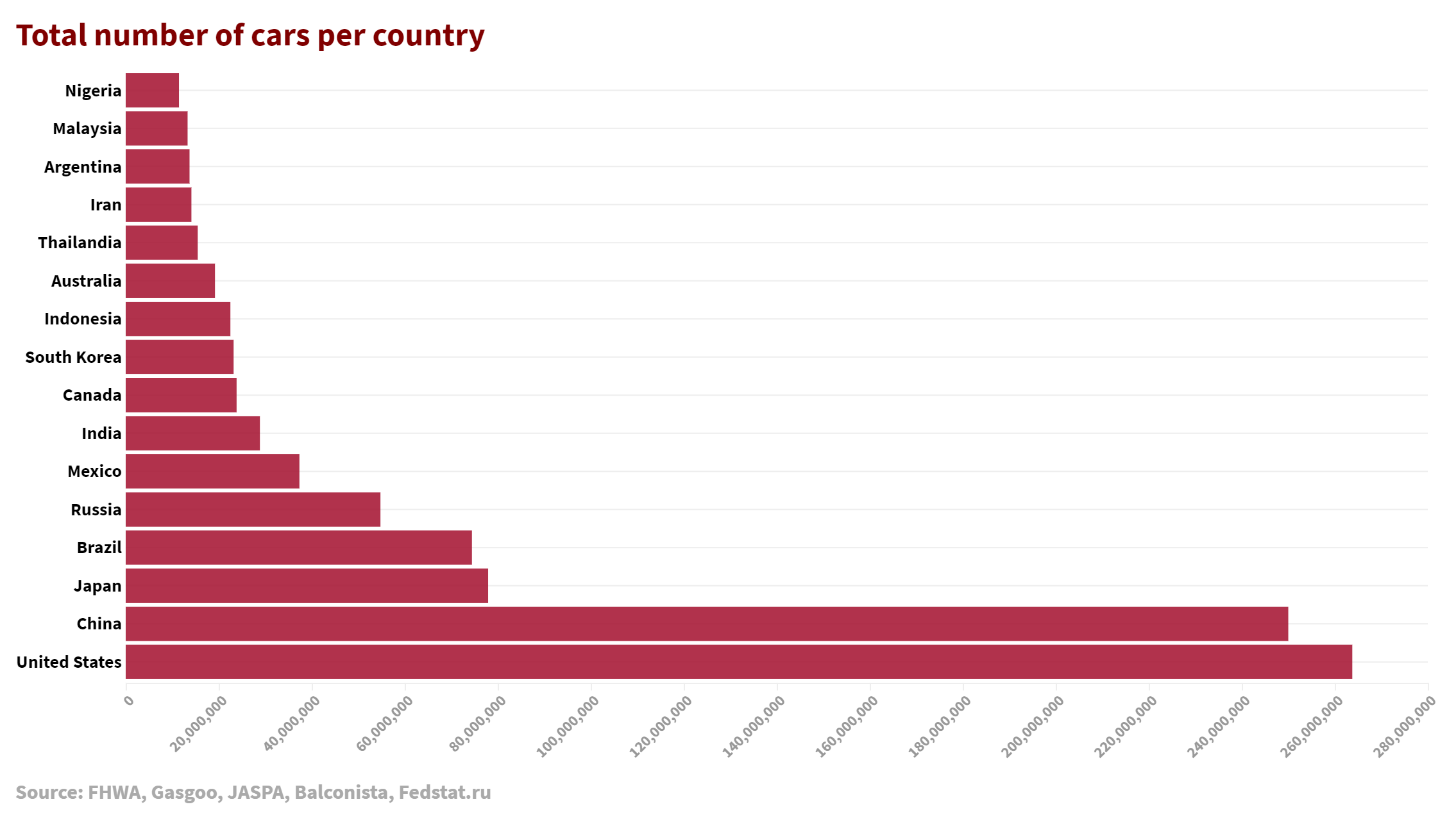22 November 2019
Southeast Asia and the challenge of sustainable development
The region’s growth could have negative impacts on climate change
Southeast Asia is today one of the most important and promising regions in terms of global economic development. It is a densely populated area, which over recent years has seen a very strong growth in gross domestic product (GDP) and wealth, while at the same time it has been affected by rapid urbanisation with a resulting increase in the average income of large sections of the population.
Despite a fall in regional GDP growth rates due to trade tensions, OECD forecasts remain high (if compared with Europe) until 2020.

The central banks of the countries in this area have adopted monetary policies to support growth and limit financial market vulnerabilities. However, their effect may be undermined by trade tensions between the United States and China, which threaten to affect the whole region.
Nevertheless, the general growth outlook for the region remains very positive. Inevitably, this growth is linked to an increase in emissions of pollutants and, in general, in the challenges that these countries will have to face in terms of the environment, above all in the large and rapidly expanding population centres.
One of the measures typically used to assess pollution levels is the concentration of particulate matter 2.5 (or PM 2.5, fine particles with a diameter of less than 2.5 µm), which is very damaging to health. On inhalation, the particles can reach the lungs and cause serious problems to the respiratory system, leading to a decrease in lung capacity and chronic bronchitis.
In urban areas (1500 inhabitants per square kilometre) of Southeast Asia, particulate matter pollution exceeds the maximum limit set by the World Health Organization (2.5µg/m3) for 98% of the resident population.

According to the World Health Organization, particulate matter pollution was the direct cause of around 1.5 million deaths across Southeast Asia in 2015 (mainly in the large population centres in India and China), with significant consequences for welfare costs.

Given these pollution statistics, the governments of these countries find themselves facing a very tough challenge: to combine economic growth with sustainable policies able to curb polluting emissions. Areas for action include electricity generation, urban mobility and collaborative land-use planning between states, at all levels of public administration.
In 2016, around 36% of electricity production in Southeast Asia came from coal and oil-fired power stations: according to the OECD, this figure is set to rise to 44% by 2040. A large part of coal and oil-fired power stations are located close to large population centres, further contributing to the pollution in urban areas, already affected by industrial activities and transport emissions. With a view to energy transition, a target of 23% renewable energy sources by 2025 was set during the last meeting of the ministries for economic development of Southeast Asian countries.
Further measures have been taken to limit the use of private vehicles and to improve public transport networks, such as introducing laws on vehicle emissions in line with European standards. At the moment, the total number of cars in Southeast Asian countries is continuing to grow, and is set to increase as the middle class population grows.

According to the OECD, the biggest obstacle is the lack of a shared governing body on both a state and macro-regional level. Indeed, different countries have different rules on the division of powers and the ability to legislate on environmental and emissions issues, with some autonomous regions within the individual countries. The lack of cooperation between the various regional bodies prevents wide-ranging action from being taken, and only by overcoming this will it be possible to have a significant impact on emissions in the region.

